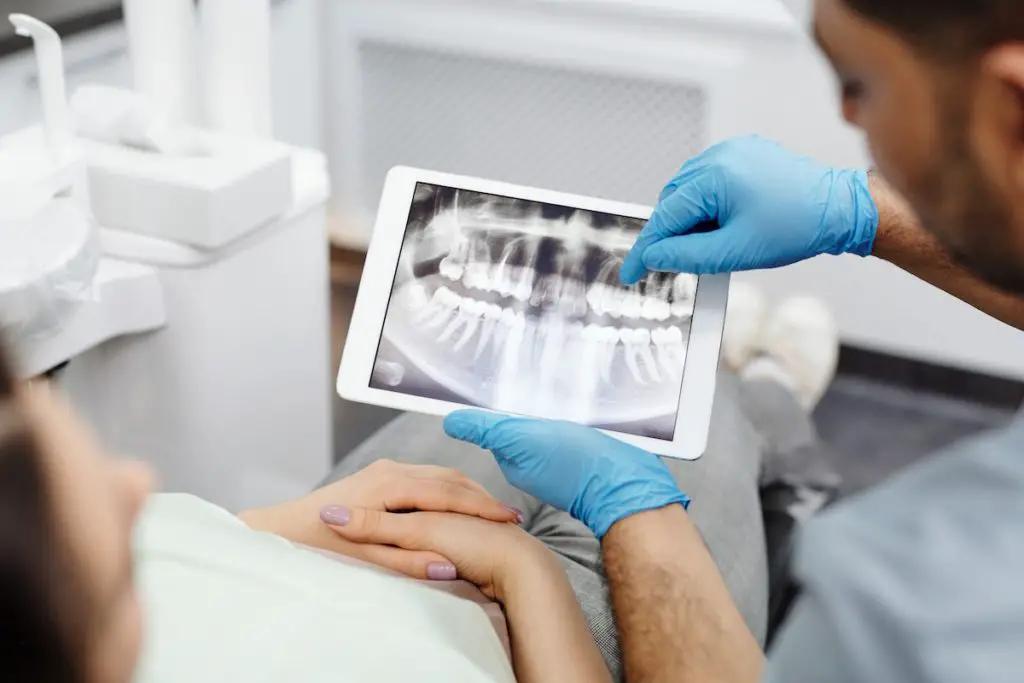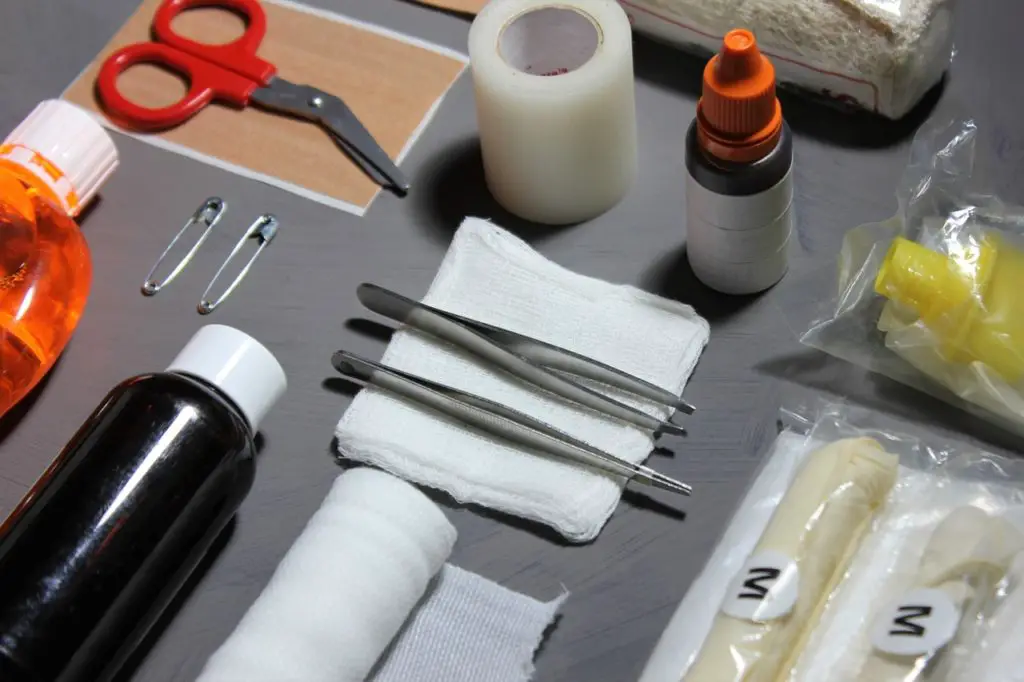Tooth extraction is a common dental procedure that involves removing a tooth from its socket in the jawbone. It may be necessary due to decay, damage, or overcrowding, especially when wisdom teeth are coming in. While the procedure itself is relatively straightforward, proper post-extraction care is crucial to ensure a smooth recovery and prevent complications. This blog post will provide you with important information on what to expect after a tooth extraction, as well as tips on how to take care of yourself to ensure a speedy recovery.
- What are typical reasons to have wisdom teeth removed?
- What to do after your wisdom teeth are removed?
- What is the best gauze to use in my mouth after tooth extraction?
- Is it safe to use gauze in your mouth?
- What size gauze is good to use after a tooth extraction?
- How long do you need to keep gauze in your mouth after a tooth extraction?
- Can I sleep with gauze in my mouth after a tooth extraction?
- What is dry socket?
What are typical reasons to have wisdom teeth removed?
When it comes down to it they’re just isn’t enough room in many people’s mouths for wisdom teeth to come in safely. There are three primary reasons why people have their wisdom teeth removed:
- Impacted teeth: Wisdom teeth can become impacted, meaning they do not have enough room to properly emerge from the gums. This can cause pain, infection, and damage to adjacent teeth.
- Crowding: Wisdom teeth can also cause crowding of the other teeth, resulting in misalignment and shifting of the teeth.
- Decay or Gum Disease: Wisdom teeth are harder to clean properly because they are located at the back of the mouth and can be harder to reach. This can result in tooth decay or gum disease.
The good news is that not all wisdom teeth need to be removed. The decision is usually made by a dentist or an oral surgeon after examination and x-ray.
What to do after your wisdom teeth are removed?
After having your wisdom teeth removed, it’s important to take care of yourself to ensure proper healing. The most important thing you can do is follow the directions of your dentist, but they will generally recommend something along these lines:
- Bite on a gauze pad immediately after the procedure to help stop the bleeding, which could continue for up to 24 hours.
- Apply an ice pack to your face as needed on the first day to reduce swelling.
- Take any prescribed pain medication as directed.
- Avoid smoking or using straws, as the sucking motion can dislodge the blood clot that forms in the socket.
- Avoid solid food for the first 24 hours, and then gradually progress to a soft diet.
- Keep the area clean by gently rinsing your mouth with warm salt water several times a day, as directed by your dentist or oral surgeon, although you will want to wait to do this until after the bleeding has stopped.
- Get plenty of rest and avoid strenuous physical activity for the first few days.
- Follow any additional instructions provided by your dentist or oral surgeon
It is important to call the oral surgeon if you experience severe pain, swelling, bleeding that does not stop, or fever.
What is the best gauze to use in my mouth after tooth extraction?
After a tooth extraction, it’s common for a dentist or oral surgeon to place a gauze pad in the extraction site to help stop bleeding. The best type of gauze to use is a sterile, non-woven gauze pad. These gauze pads are usually packaged individually and are made of a soft, absorbent material that will conform to the shape of your extraction site.
It’s important to change the gauze pad as directed by your dentist or oral surgeon, usually every 30-45 minutes, until the bleeding stops. There’s no need to continue to bite the gauze once the bleeding has stopped. Bleeding could continue for up to 24 hours after the procedure.
Is it safe to use gauze in your mouth?
Gauze is a commonly used medical material for wound care and to control bleeding after a tooth extraction.
When used appropriately, gauze is considered safe for use in the mouth. However, it’s important to make sure that the gauze pad you are using is sterile and that it’s handled properly to avoid contamination.
What size gauze is good to use after a tooth extraction?
The size of the gauze pad that is used after a tooth extraction will depend on the size of the extraction site and the amount of bleeding. Typically, a small square gauze pad measuring about 2×2 inches is suitable for most extraction sites.
The dentist or oral surgeon will usually place the gauze pad in the extraction site and ask you to bite down on it to help stop the bleeding. They will then give you extra gauze pads to change as needed. They will also give you instructions on how long to keep the gauze in place, usually 30-45 minutes at a time.
If you are unsure about the size of the gauze pad or how to use it, it’s best to seek guidence from your dentist.
How long do you need to keep gauze in your mouth after a tooth extraction?
The length of time you need to keep gauze in your mouth after a tooth extraction will depend on the amount of bleeding and your individual recovery process. If the gauze becomes saturated with blood, you’ll need to change the gauze pad several times until the bleeding stops. Typically, your dentist or oral surgeon will suggest replacing the gauze somewhere around 30-45 minutes at a time, which could continue for several hours.
It’s important to follow the instructions provided by your dentist or oral surgeon regarding the use of gauze pads. Once the bleeding has stopped, it is not necessary to continue biting on the gauze.
Can I sleep with gauze in my mouth after a tooth extraction?
Sleeping with gauze in your mouth is generally not recommended after a tooth extraction. Although the gauze pad is used to help stop bleeding and to protect the extraction site, it can become a choking hazard if you were to fall asleep. Once the bleeding has stopped, usually within the first few hours after the procedure, the gauze pad is no longer needed.
Depending on what medication you’re given, it may cause drowsiness. If you are resting in bed or on the couch, be sure to sit upright in case you do fall asleep.
What is dry socket?
Dry socket is a condition that can occur after a tooth is extraction. It’s caused when the blood clot that forms in the socket after the tooth is extracted is dislodged or dissolves. This leaves the underlying bone and nerves exposed.
Thankfully, try socket is fairly rare as it occurs in about 2-5% of people who have a tooth pulled.
The symptoms of dry socket include:
- Severe pain in the extraction site, which can radiate to the ear, eye, temple, or jaw
- Bad breath or a foul taste in the mouth
- Visible bone in the extraction site
- Swelling in the extraction site
- Difficulty opening the mouth
How is dry socket treated?
Dry socket can be treated by a dentist or oral surgeon by cleaning the socket and applying a medicated dressing to the site. Pain relief medication or antibiotics may also be prescribed.
How can you prevent dry socket?
There are several things you can do to reduce your risk of developing it:
- Don’t smoke: Smoking can interfere with blood clot formation and increase the risk of dry socket. It’s best to avoid smoking for at least 48 hours after the extraction.
- Avoid using straws: Sucking on a straw can dislodge the blood clot and increase the risk of dry socket.
- Limit physical activity: Avoid strenuous physical activity for the first 24 hours after the extraction.
- Keep the extraction site clean: Gently rinse your mouth with warm salt water several times a day, as directed by your dentist or oral surgeon.
- Follow your dentist or oral surgeon’s instructions: Be sure to follow any additional instructions provided by your dentist or oral surgeon, such as taking prescribed medications or avoiding certain foods.
- Take care of your oral hygiene: Brush your teeth and tongue gently, but avoid the extraction site for the first 24 hours.
It’s important to note that not all the above precautions are applicable to all patients, as the instructions may vary depending on the individual case. Your dentist or oral surgeon will give you specific instructions on how to care for yourself after the extraction and how to avoid dry socket.




